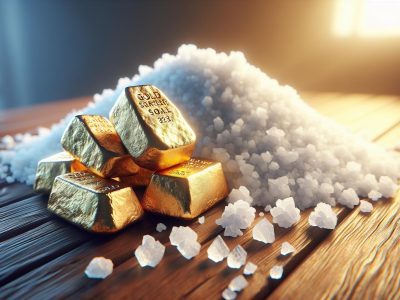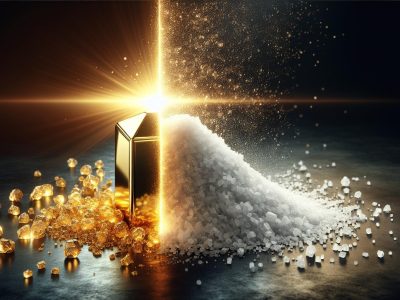Difference Between Mixture and Compound: Key Definitions, Examples, and Applications
Imagine holding a glass of lemonade on a sunny day—sweet, tangy, and refreshing. Now, think about a diamond, its brilliance forged from pure carbon atoms bonded together. Both seem simple, yet they represent two fundamentally different ways substances exist: mixtures and compounds. But what truly sets them apart?
Understanding the distinction between a mixture and a compound isn’t just chemistry jargon; it’s a gateway to grasping how the world around you is built. From the air you breathe to the water you drink, these concepts shape your everyday life in ways you might not realize. Whether you’re curious about science or just want to see the hidden patterns in nature, exploring this difference offers a fresh perspective on matter itself.
Understanding Mixtures
A mixture contains two or more substances that are combined physically, not chemically. These components retain their original properties and can often be separated through simple physical methods.
Definition Of Mixtures
A mixture is a physical combination of different substances where no chemical bonding occurs. The individual elements or compounds maintain their properties. For example, sand mixed with salt can still be recognized as separate grains when viewed closely.
Characteristics Of Mixtures
- Physical Combination: Components are mixed without chemical reactions, maintaining their chemical identities.
- Variable Composition: The ratio of substances can change. Saltwater, for instance, can have varying amounts of salt and water.
- Separation Methods: Components can be separated by filtration, distillation, or evaporation. For example, iron filings can be removed from sand using a magnet.
- Nonuniform or Uniform Distribution: Mixtures can be homogeneous, like sugar dissolved in water, or heterogeneous, like oil and water.
- Homogeneous Mixtures: Air (oxygen and nitrogen), vinegar (acetic acid in water).
- Heterogeneous Mixtures: Salad (vegetables and dressing), trail mix (nuts, raisins, candy).
Mixtures exist in all three states of matter, demonstrating their versatility.
Understanding Compounds
Compounds result from the chemical combination of two or more elements. They differ from mixtures because their formation involves chemical bonds, creating entirely new substances with distinct properties.
Definition Of Compounds
A compound is a pure substance formed when two or more elements chemically react and combine in a fixed ratio. Unlike mixtures, the resulting substance can’t be separated into its original elements by physical methods. For example, water (H₂O) is a compound comprising hydrogen and oxygen in a 2:1 ratio, bound together by chemical bonds.
Characteristics Of Compounds
- Fixed Composition: Compounds always have a definite proportion of elements. For instance, carbon dioxide (CO₂) always contains one carbon atom and two oxygen atoms.
- Unique Properties: The properties of compounds differ from the individual elements. Sodium is a reactive metal, and chlorine is a toxic gas, but their compound, sodium chloride (table salt), is safe for consumption.
- Chemical Bonding: Compounds involve ionic or covalent bonds, forming through chemical reactions.
- Separation by Chemical Methods: You can only separate compounds into simpler substances using chemical processes like electrolysis, not by physical means.
- Water (H₂O): Essential for life, water forms when hydrogen and oxygen combine chemically.
- Carbon Dioxide (CO₂): A vital compound in respiration and photosynthesis.
- Sodium Chloride (NaCl): Common table salt used in food seasoning.
- Methane (CH₄): A hydrocarbon compound present in natural gas used for energy.
These examples highlight how compounds exhibit specific characteristics and play crucial roles in everyday life.
Key Differences Between Mixtures And Compounds
Mixtures and compounds are fundamental aspects of matter, each with unique characteristics that make them essential for different applications. Understanding their differences helps you to distinguish their roles in scientific and everyday contexts.
Composition
A mixture consists of two or more substances combined physically, retaining their individual properties. For example, sand and iron filings together create a mixture because no chemical reactions occur between them. Mixtures have a variable composition, meaning the proportions of components can change.
On the other hand, a compound forms through a chemical combination of elements in a fixed ratio. If hydrogen and oxygen chemically bond, they form water (H₂O), a compound with properties entirely distinct from its individual elements. In compounds, composition is always constant.
Separation Methods
You can separate components of a mixture using physical methods like filtration, distillation, or sieving. For example, separating salt from seawater utilizes evaporation, leaving salt behind.
Compounds require chemical reactions to break down into their elements or simpler substances. Electrolysis, for instance, splits water into hydrogen and oxygen. Physical separation isn’t possible for compounds due to the chemical bonds between atoms.
Properties
Mixtures retain the properties of their individual substances. For example, in a salad (a heterogeneous mixture), each ingredient maintains its original texture and flavor. Homogeneous mixtures, like sugar dissolved in water, may appear uniform but still consist of separate entities.
Compounds display unique properties different from those of the elements forming them. Sodium is a reactive metal, and chlorine is a toxic gas, but chemically combined, they form sodium chloride (table salt), which is safe for consumption.
Energy Changes
Mixing substances doesn’t typically involve significant energy changes since no chemical bonds are formed or broken. Stirring oil and water, for instance, combines them physically but involves minimal energy exchange.
Forming a compound involves substantial energy changes. When hydrogen burns in oxygen to create water, heat is released because chemical bonds form, indicating an exothermic reaction. Breaking bonds in compounds often requires energy, as in the decomposition of calcium carbonate (limestone) into calcium oxide and carbon dioxide through heating.
Practical Applications Of Mixtures And Compounds
Mixtures and compounds play pivotal roles in myriad real-world applications, helping you understand their functionality better.
Applications Of Mixtures
- Food Industry
Mixtures are essential in food processing, from creating beverages like soda (carbon dioxide mixed in water) to seasonings (spice blends). Homogeneous mixtures, like vinegar, ensure consistent taste, while heterogeneous mixtures, like salads, allow customization.
- Pharmaceutical Formulations
Drug formulations often rely on mixtures. Syrups (sugar in water) and suspensions (liquid medications) show how stable mixtures enhance medicinal effectiveness.
- Construction Materials
Concrete is a widely used mixture of cement, sand, gravel, and water. These components, combined physically, provide strength for infrastructures.
- Household Products
Everyday items, including detergents and shampoos, are mixtures tailored for specific cleaning and cosmetic functions.
- Medicine
Life-saving drugs like aspirin (C9H8O4) exemplify compounds. Chemical composition ensures precise functionality for targeted health conditions.
- Energy Sources
Fuels like methane (CH4) offer stable energy sources due to their uniform chemical structures, unlike mixtures which may vary in energy output.
- Agriculture
Fertilizers, such as ammonium nitrate (NH4NO3), support crop growth, demonstrating the significance of chemically bonded compounds in agriculture.
- Water Treatment
Compounds such as chlorine (Cl2) purify water permanently, addressing contamination effectively compared to filtration, a separation of mixtures.
By recognizing these functional domains, you can appreciate the intricate balance of mixtures and compounds in daily life.
Conclusion
Understanding the difference between mixtures and compounds deepens your appreciation for the complexity of the world around you. These concepts are more than just scientific definitions—they reveal how matter interacts and transforms in countless ways.
By exploring mixtures and compounds, you gain insights into their unique properties and practical applications. Whether it’s the air you breathe or the medicines you rely on, this knowledge connects everyday experiences to the fascinating principles of chemistry.
- Understanding the Difference Between Oath and Affirmation: Key Facts You Need to Know - October 30, 2025
- Understanding the Difference Between Annulled and Divorced: Key Legal and Emotional Insights - October 30, 2025
- Ibuprofen vs. Aspirin: A Comprehensive Comparison - October 30, 2025




